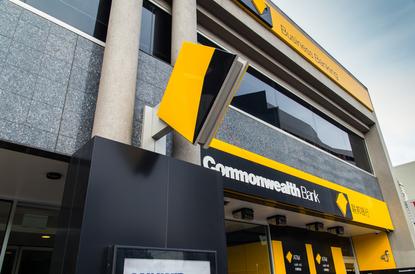CBA cuts IT spend by nearly a third
- 07 February, 2018 11:31

Commonwealth Bank of Australia’s IT services expenses decreased by 32 per cent to $752 million in the half year ended in December, compared with the same period in 2016.
This was mainly due to the one-off cost for the “acceleration of amortisation on certain software assets” the bank revealed in its half year results this morning. These assets mainly relate to digital and direct banking channels.
Without this one-off cost, expenses rose by six per cent, driven by a higher investment spend and rising software licensing costs.
The bank invested $627 million in the half year to December 2017 on productivity and growth, risk and branch refurbishment initiatives, an increase of eight per cent on the prior comparative period.
More than half of that spend was on productivity and technology, which was already paying off, the bank said.
“This result underlines the continued impact of our strategy of investing in our people and technology,” departing CEO Ian Narev said in a statement this morning.
Investments included the delivery of “tools and capabilities which allow easier and cheaper access to the group’s data” such as data analytics tools and infrastructure and ongoing spend in the “development and resilience of our digital channel”.
The result has been that six million customers now use CBA’s digital channels, an increase of eight per cent in the last 12 months with 29 per cent of new accounts opened online. More than half of transactions by value are completed digitally, with digital channels accounting for a quarter of all sales. Over the last year logins to the banks mobile app rose by a quarter.
Investment was also made in “innovative digital experiences” such as the AI powered chatbot Ceba which can recognise approximately 60,000 different ways customers ask for 200 tasks such as activating their card, checking the account balance, making payments, or getting cardless cash.
The bot will soon provide “real-time alerts in the Commbank app to give customers even more tools to help manage their spending and avoid fees and charges” the bank revealed.
Other customer experience efforts included the release of the Daily IQ 2.0 business tool, which provides customers with insights into their business performance, and the development of TymeCoach, a financial wellbeing platform for customers in South Africa. The technology developed for Tyme is now being transferred to the CBA-owned ASB Bank in New Zealand, with the deployment of 130 digital kiosks.
CBA continued to invest in cyber security with a focus on data protection and “consistent application of cyber security controls” to help it identify and remediate suspicious activity. It also pumped money into “improving the resilience of the Group’s IT infrastructure”, including payments and data centres.
Capitalised software costs remained flat between half year end December 2017 and half year end December 2016, the investments in growth offset by “the reclassification of capitalised software within the life insurance businesses to assets held for sale”.
Costly code
Overall, the bank revealed a 1.9 per cent fall in cash profit to $4.73 billion.
Part of that fall was put down to provisions totalling $375 million, being made for the fines it expects to receive from AUSTRAC.
The money laundering watchdog in August took action against the bank, accusing it of 53,700 breaches of the Anti-Money Laundering and Counter-Terrorism Financing Act 2006.
The bank blamed a software ‘coding error’ for the breaches.
“We have taken a significant provision for regulatory and compliance costs, consistent with accounting standards…We recognise, and regret, that these costs arise from our failure to meet some standards that we should have. We will continue to work hard to do better,” Narev said in a statement.

